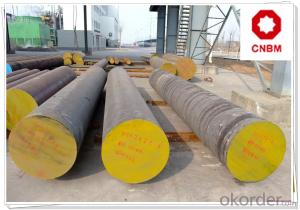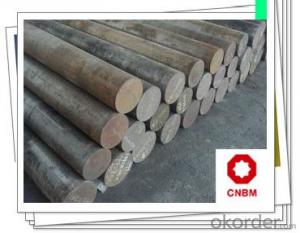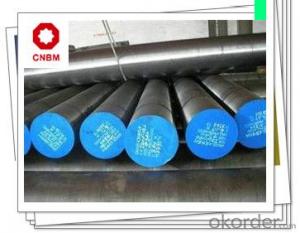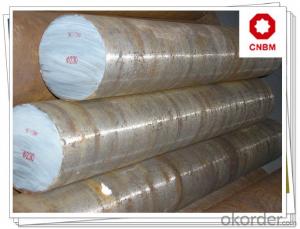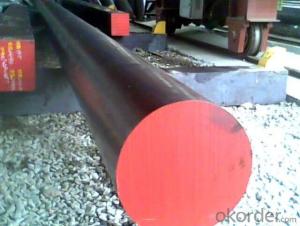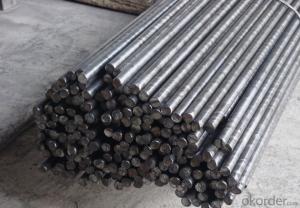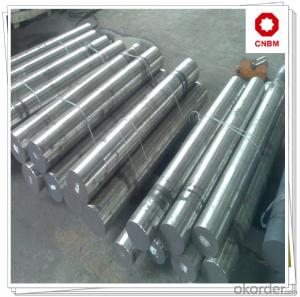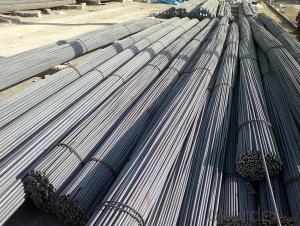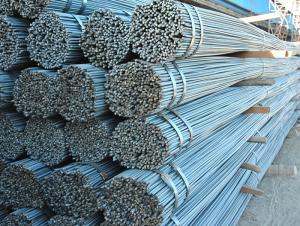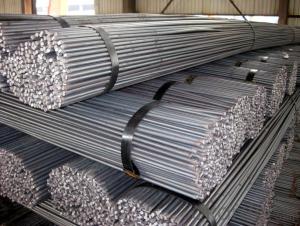Carbon Steel Bar 1020 S20C C22
- Loading Port:
- Shanghai
- Payment Terms:
- TT OR LC
- Min Order Qty:
- 30 m.t.
- Supply Capability:
- 120000 m.t./month
OKorder Service Pledge
OKorder Financial Service
You Might Also Like
Carbon Steel Bar 1020 S20C C22
Specification
Chemical Composition | Mechanical Properties (In Quenched & Tempered State) | ||
C | 0.17-0.23 % | Tensile strength(MPA) | ≥253 |
Si | 0.17-0.37 % | Yield strength (MPA) | ≥245 |
Mn | 0.35-0.65 % | Elongation (δ5/%) | ≥25 |
Cr | ≤0.25 % | Reduction in Area (ψ/%) | ≥45 |
Ni | ≤0.30 % | Impact (J) | ≥ 47 |
P | ≤0.035 % | Impact toughness value αkv (J/cm2) | ≥59(6) |
S | ≤0.035 % | Hardness | ≤156HB |
Cu | ≤0.25 % | ||
1, Diameter: 8mm-250mm rounds
5mm-9mm rods
2, Length: 2m, 3m, 5.8m, 6m or customized
3, Standard: GB, ASTM, AISI, SAE, DIN, JIS, EN
OEM technology - send detailed technical parameters for accurate quotation.
2, Produce Process: smelt iron - EAF smelt billet - ESR smelt billet -
hot rolled or forged to get the steel round bar and plate
3, Heat Treatment: annealing, normalizing, tempering, quenching
4, Surface Treatment: Black, Polished, Galvanized
5, Quality Assurance: We accept third party inspection for all orders.
You can ask testing organizations such as SGS, BV, etc. to test our products before shipping.
Products Show
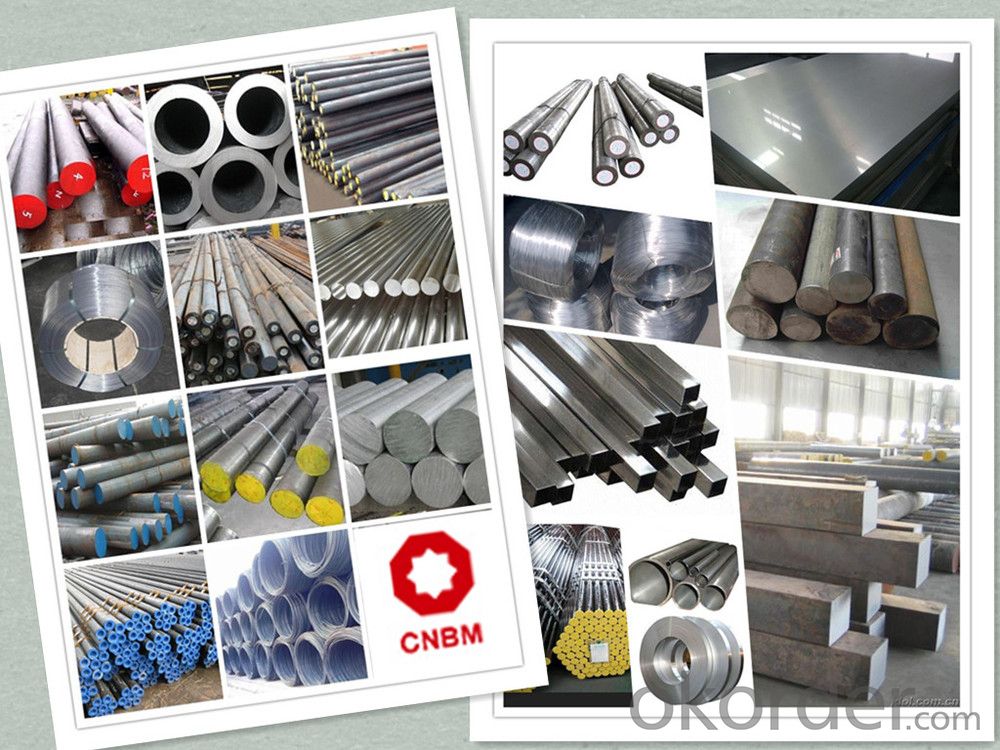
Product Overviews
| Product Name | Typical Grades | Diameter(mm) | Standard adopted |
| Carbon Steel | 20 (1020/S20C/C22) | Ø16-Ø300 |
GB/SAE/JIS/DIN
|
| 40 (1040/S40C/C40) | |||
| 45 (1045/S45C/C45) | |||
| Bearing Steel | GCr9 (51100/SUJ1) | Ø12-Ø250 | |
| GCr15 (52100/SUJ2/100Gr6) | |||
| GCr9SiMn (A485-Gr.1/SUJ3) | |||
Cr-Mo Steel | 20Cr (5120/SCr420H/20Cr4) | Ø12-Ø250 | |
| 40Cr (5140/SCr440/41Cr4) | |||
| 42CrMo(4140/SCM440/42CrMo4) | |||
| Gear Steel | 20CrNiMo | Ø16-Ø600 | |
| 20CrMn(5115/SMnC420/20MnCr5) | |||
| 20CrNiMo(8620/SNCM220/20CrMiMo2) |
Work Shop

Company Information
CNBM International Corporation is the most important trading platform of CNBM group.
Whith its advantages, CNBM International are mainly concentrate on Cement, Glass, Iron and Steel, Ceramics industries and devotes herself for supplying high qulity series of refractories as well as technical consultancies and logistics solutions.

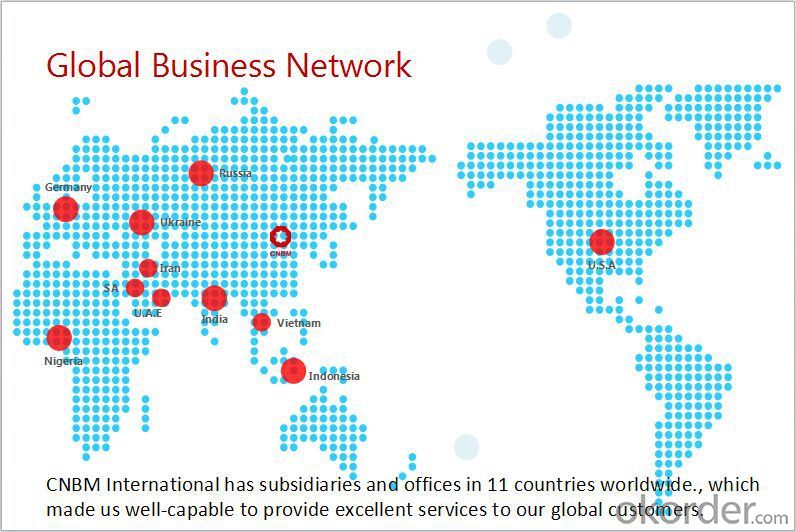
FAQ
1, Your advantages?
professional products inquiry, products knowledge train (for agents), smooth goods delivery, excellent customer solution proposale
2, Test & Certificate?
SGS test is available, customer inspection before shipping is welcome, third party inspection is no problem
3, Factory or Trading Company?
CNBM is a trading company but we have so many protocol factories and CNBM works as a trading department of these factories. Also CNBM is the holding company of many factories.
4, Payment Terms?
30% TT as deposit and 70% before delivery.
Irrevocable L/C at sight.
5, Trading Terms?
EXW, FOB, CIF, FFR, CNF
6, After-sale Service?
CNBM provides the services and support you need for every step of our cooperation. We're the business partner you can trust.
For any problem, please kindly contact us at any your convenient time.
We'll reply you in our first priority within 24 hours.
Packaging & Delivery
1, Packaging: seaworthy package or as required
2, Delivery: 35-45 days or based on quantity
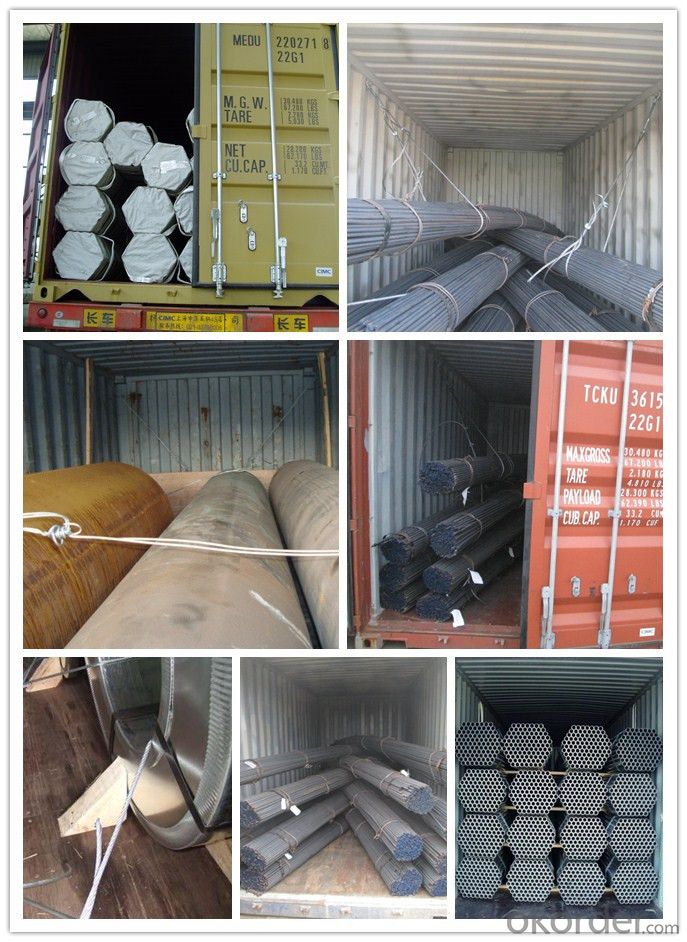
- Q:Can steel round bars be used for making brake components?
- Yes, steel round bars can be used for making brake components. Steel is a common material used in the manufacturing of brake components due to its high strength, durability, and resistance to heat and corrosion. Steel round bars can be machined and formed into various shapes required for brake components such as brake rotors, brake caliper brackets, or brake pedal levers.
- Q:Can the same grade steel instead of round bar be ok?
- Tolerable。1. grades of steel are different (chemical composition is different). Round steel (HPB235) is carbon steel, steel is Q235; thread steel is low alloy steel; HRB335 grade steel is 20MnSi (20 manganese silicon); HRB400 grade steel bars are 20MnSiV or 20MnSiNb or 20MnTi etc.;
- Q:What is the yield strength to tensile strength ratio of a steel round bar?
- The yield strength to tensile strength ratio of a steel round bar is typically around 0.85.
- Q:What are the chemical composition requirements for steel round bars?
- The chemical composition requirements for steel round bars generally include a specific range of elements such as carbon, manganese, phosphorus, sulfur, silicon, and sometimes additional elements like chromium, nickel, and molybdenum. These requirements are defined by various international standards and specifications, ensuring the desired mechanical properties and performance of the steel.
- Q:Are steel round bars suitable for welding applications?
- Yes, steel round bars are suitable for welding applications. Steel round bars are commonly used in welding applications due to their high strength and durability. They can be easily welded to other steel components or structures using various welding processes such as arc welding, MIG welding, or TIG welding. Steel round bars also offer good mechanical properties, including excellent tensile strength, which makes them suitable for welding applications where strength and load-bearing capacity are important factors. Additionally, steel round bars are available in a wide range of sizes and grades, allowing for versatility and compatibility with different welding projects. However, it is important to choose the appropriate type of steel round bar based on the specific welding application and the desired properties of the final product.
- Q:What are the limitations of using steel round bars?
- There are several limitations associated with using steel round bars in various applications. One limitation is their susceptibility to corrosion. Steel round bars, especially those made of carbon steel, are prone to rusting when exposed to moisture or certain harsh environments. This can significantly impact their structural integrity and lifespan. Another limitation is their weight. Steel is a heavy material, and round bars can be particularly cumbersome to handle and transport, especially in large quantities. This can make the installation process more challenging and increase the overall cost of a project. Additionally, steel round bars may not be suitable for applications requiring high levels of flexibility or bending. Due to their rigid nature, they can be difficult to shape or mold into intricate designs. This limitation may restrict their use in certain industries or architectural designs that demand more versatile materials. Another factor to consider is the cost of steel round bars. Depending on the grade and quality of the steel, as well as market conditions, the price of steel round bars can fluctuate significantly. This can pose a financial limitation for projects with tight budgets or when the cost of raw materials is a critical factor. Lastly, steel round bars may not be suitable for applications requiring high resistance to extreme temperatures. While steel has good thermal conductivity, certain temperature ranges can affect its structural properties, leading to potential weaknesses or deformations. Overall, while steel round bars are widely used and offer many advantages, it is essential to consider their limitations such as susceptibility to corrosion, weight, limited flexibility, cost, and temperature sensitivity when selecting materials for specific applications.
- Q:Can steel round bars be coated?
- Indeed, it is possible to coat steel round bars. Coating them yields numerous advantages, such as enhanced resistance to corrosion, increased durability, and improved visual appeal. The most commonly utilized coatings for steel round bars encompass galvanized coatings, epoxy coatings, and powder coatings. Galvanized coatings encompass the application of a zinc layer onto the steel's surface, which provides exceptional protection against corrosion. Epoxy coatings, on the other hand, find common application in industrial settings due to their remarkable chemical resistance and ability to withstand harsh environments. Powder coatings, involving the electrostatic application of a dry powder, are then cured under heat to form a robust and protective layer. These coatings can be employed on steel round bars to safeguard against rust and other forms of corrosion, thereby rendering them suitable for a broad scope of applications across various industries, including construction, manufacturing, and automotive.
- Q:How are steel round bars classified based on their shape?
- Steel round bars are classified based on their shape into two main categories: hot-rolled round bars and cold-drawn round bars. Hot-rolled round bars are made by heating a steel billet until it becomes malleable and then passing it through a series of rollers to achieve the desired shape. This process results in a rougher surface texture and a slightly larger diameter compared to cold-drawn round bars. Hot-rolled round bars are commonly used in construction, engineering, and manufacturing applications where strength and durability are important. On the other hand, cold-drawn round bars are made by pulling a hot-rolled round bar through a series of dies at room temperature. This process improves the dimensional accuracy, surface finish, and mechanical properties of the steel. Cold-drawn round bars have a smoother surface texture and a more precise diameter, making them suitable for applications that require tight tolerances, such as precision machining, automotive components, and shafts for machinery. In summary, the classification of steel round bars based on their shape is determined by the manufacturing process used. Hot-rolled round bars are rougher and slightly larger in diameter, while cold-drawn round bars have a smoother surface texture and more precise dimensions. The choice between these two categories depends on the specific requirements of the application.
- Q:How do you calculate the weight of a steel round bar based on its length and diameter?
- To calculate the weight of a steel round bar, you can use the formula: weight = (pi * diameter^2 * length) / 4.
- Q:What is the difference between a hot-finished and a cold-finished steel round bar?
- The manufacturing process and resulting physical properties distinguish hot-finished and cold-finished steel round bars. Hot-finished bars are made by subjecting the steel to high temperatures in a furnace, followed by rolling processes. This method allows for greater malleability, making it easier to shape the steel to its desired dimensions. Consequently, hot-finished bars often have a rougher surface and may exhibit imperfections such as scaling and decarburization. Nonetheless, the high-temperature process enhances the steel's mechanical properties, including tensile and yield strength, making it suitable for applications requiring greater strength and durability. Conversely, cold-finished bars undergo a distinct manufacturing process. They are formed by cold rolling the steel at room temperature, resulting in a smoother surface finish and tighter dimensional tolerances compared to hot-finished bars. The absence of high temperatures eliminates scaling and decarburization, yielding a more uniform and cleaner appearance. Although cold-finished bars may have slightly lower tensile and yield strength than their hot-finished counterparts, they offer improved dimensional accuracy and a smoother surface, making them ideal for precision machining or applications that prioritize aesthetics. To summarize, the disparities between hot-finished and cold-finished steel round bars lie in the manufacturing process, surface finish, dimensional accuracy, and mechanical properties. Hot-finished bars provide greater strength and suit applications that prioritize durability, whereas cold-finished bars offer superior surface finish and dimensional accuracy, making them ideal for precision machining or applications where aesthetics are crucial.
1. Manufacturer Overview |
|
|---|---|
| Location | |
| Year Established | |
| Annual Output Value | |
| Main Markets | |
| Company Certifications | |
2. Manufacturer Certificates |
|
|---|---|
| a) Certification Name | |
| Range | |
| Reference | |
| Validity Period | |
3. Manufacturer Capability |
|
|---|---|
| a)Trade Capacity | |
| Nearest Port | |
| Export Percentage | |
| No.of Employees in Trade Department | |
| Language Spoken: | |
| b)Factory Information | |
| Factory Size: | |
| No. of Production Lines | |
| Contract Manufacturing | |
| Product Price Range | |
Send your message to us
Carbon Steel Bar 1020 S20C C22
- Loading Port:
- Shanghai
- Payment Terms:
- TT OR LC
- Min Order Qty:
- 30 m.t.
- Supply Capability:
- 120000 m.t./month
OKorder Service Pledge
OKorder Financial Service
Similar products
New products
Hot products
Hot Searches
Related keywords

